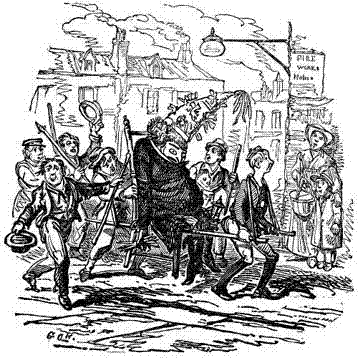The Tale of Guy Fawkes
Posted on November 5, 2015
When I was a kid, bonfire night or Guy Fawkes night was an invite to Withey’s house to watch my Dad or Terry Withey making a nonsense of the theory that you never return to an apparently dud firework.
All we really knew about Guy himself was that he plotted to blow-up parliament and was apparently a bit of a traitor, rather than 17th-century proof that one man’s terrorist is another man’s freedom fighter.
Of course, with the advent Google and Wikipedia, we are only one click away from reading the full story of Guy Fawkes, especially if you are like me and need something to kill a bit of time in between phone calls.
It is a fascinating part of British history, not least the description of torture and disembowelling endured by Fawkes and his conspirators that makes a stretch in Guantanamo Bay look like a sumptuous picnic by a glistening trout stream.
When the gunpowder plot was uncovered on 5th November 1605, King James ordered people across the country to light bonfires in celebration of the foiling of the plot. This is where the tradition of Bonfire Night started, going through varying periods of popularity through the following decades and centuries.
There are calls for the burning of a Guy to be halted as it is seen as a celebration of Catholic repression, but to me, unless of course we are talking about areas that still hold sectarian bitterness (Glasgow, Belfast or Derry for example), British people, on the whole, couldn’t give a stuff about what race or religion someone is and to ban a fun event over something that happened 400 years ago, seems a little churlish.
However, I do think it would be a good idea to teach kids the whole story as Guy Fawkes was, by all accounts, a formidable fighter and a considerable force to be reckoned with, standing up for people who were treated as second class citizens and persecuted beyond comprehension during that barbaric period in British history.
I am no Catholic, but I do think that Guy deserves a bit more credit than he gets, even King James admired his bravery, describing Fawkes as a steadfast character possessing “a Roman resolution”. He was certainly not the coward he is often portrayed to be.
Of course, the King’s admiration of Guy Fawkes didn’t save him from torture, and along with his fellow conspirators he faced a subsequent execution that made 21st-Century Arab stoning look like a form of pleasure.
So, on 31 January 1606, Fawkes along with three others, Thomas Wintour, Ambrose Redwood, and Robert Keyes, was dragged (drawn) from the Tower on wattled hurdles to the Old Palace Yard at Westminster, opposite the building they had attempted to blow-up.
His fellow plotters were then hanged and quartered as Fawkes, the final plotter on the scaffold looked on, presumably thinking to himself that he had better afternoons. With ludicrous and desperate futility, he asked for forgiveness of the King and state, while keeping up his “crosses and idle ceremonies”.
Severely restricted by torture and guided by the hangman, Fawkes began to climb the ladder to the noose. It is not clear as to whether he jumped to his death or if the rope was incorrectly set, either way he managed to avoid the misery of the latter part of his execution by breaking his neck.
This was a time when a broken neck was deemed fortunate…oh for a return to the good ol’ days eh!
He was still quartered though (why spoil the party?) and by custom, his body parts were then distributed to “the four corners of the kingdom”, to be displayed as an unsettling reminder to those who might be foolish enough to emulate Fawkes and have another crack at blowing up parliament.
It was at this point I began to realise that the execution of Fawkes and his conspirators is perhaps best left alone until we reach adulthood, a more appropriate time to discover its stomach churning detail.
Being told as five year-old that a punishment for a crime was to have your balls cut-off and have them held up to your face just before you meet your maker, is the stuff of vivid and potentially damaging nightmares.
Especially if a regular feature of your childhood was hearing your mum screaming…“If he is not back from the pub in half an hour, I’ll have the bastard hung, drawn and quartered.”
Sounds a bit harsh for the sake of another pint.



Nibs
November 5, 2015 (1:39 pm)
I’m guessing that the watching/jeering crowds, with the early 17th century equivalent of burgers and beers, were quite possibly the ancestors of today’s Daily Mail readers . . . a little more compassionate, but not much. Still not sure about the links to our modern Bonfire night though . . .here in Germany we have them at around the same time, but the origins are simply to burn anything that can’t be used in fireplaces and clean up in time for winter – and the Germans can’t resist making that a reason for a party (using up any of last year’s beers and wines still left over from Octoberfest) . Thanks for a good tale well told.
kirsty
November 5, 2015 (5:45 pm)
you’ve made my trip up to our bonfire night a much more visceral experience! thanks, as always, for writing.